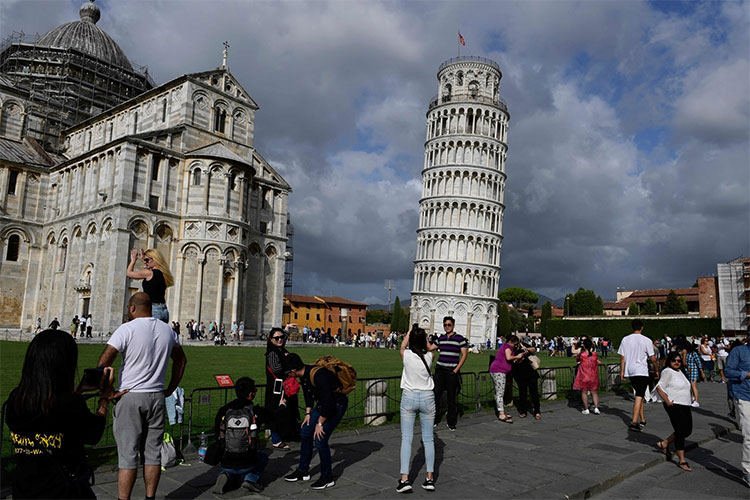Pisa leaning tower is gradually straightening
The solution to move a part of the land beneath the Pisa Tower helps this building not be tilted too much and can stand firm for several hundred years.
The leaning tower of Pisa, the 57m tall structure in Italy, has slanted about 4cm after 17 years, CNN reported yesterday. This is the result of the reinforcement process to prevent the tower from collapsing. In late 2001, after nearly a decade of remodeling, the tower began to reopen for visitors.

Pisa, the famous tower was built in the 12th century, leaning south.(Photo: AFP).
This means that Pisa has returned to the tilt of the early 19th century, according to Professor Salvatore Settis, the head of the group who oversees the tower."The decrease in tilt will not last forever, but it still makes sense. Now we have a reason to hope that the tower will continue to exist for at least 200 years," Settis said.
The tower is reinforced when tilting about 6 degrees, or 4 meters south of the vertical axis. The experts moved the soil on the opposite side to help it straighten."Technically, this is a very complicated job, but the idea is quite understandable. The tower is tilted south, so a part of the land in the north, mainly sand and clay, is moved, created. The hole for the tower subsided , " Settis explained.
Pisa began to tilt almost as soon as it started construction in 1173 due to the sandy ground. Since then, experts have taken many measures to help the tower stand.
The latest measurement results show that it is in good condition, according to Gianluca De Felice, director of the Opera della Primaziale Pisana. The tower is still being watched continuously. Every three months, the supervisory council will meet to check the data on the tower.
- Pisa Leaning Tower - Strange architecture of the world
- The cause of Pisa tower tilt
- The secret to help the leaning tower of Pisa stand before the earthquake for 800 years
- Pisa's leaning tower has been removed
- Leaning Tower of Pisa
- Pisa leaning tower of Campo dei Miracoli
- How much is the world 'wonder' worth?
- Pisa's leaning tower will not fall for 300 years
- The place has just welcomed the new year 2013, escapes
- 90% of the world's population do not know the mysteries in these famous works
- B3 Cham Tower My Son cracked and tilted
- The Colosseum subsided 38cm
 'Fine laughs' - Scary and painful torture in ancient times
'Fine laughs' - Scary and painful torture in ancient times The sequence of numbers 142857 of the Egyptian pyramids is known as the strangest number in the world - Why?
The sequence of numbers 142857 of the Egyptian pyramids is known as the strangest number in the world - Why? History of the iron
History of the iron What is alum?
What is alum?